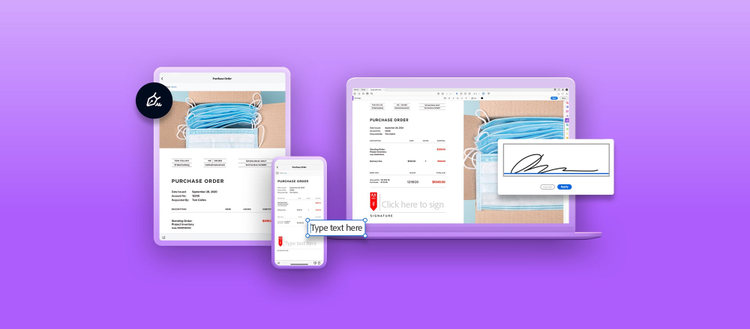The future of government: Keeping business moving with digital procurement

Government agency procurement teams protect the American public by making sure every dollar spent by their agency is used in the way it was intended. Every employee request and every vendor contract must go through an extensive review and approval process to make sure it meets the agency’s strict standards and budgetary guidelines.
COVID-19 created a catalyst for digital procurement processes
In March 2020, government procurement teams were catapulted into the digital age. With stay-at-home orders in place, employees pivoted to remote work, quickly shifting to digital contracts and e-signatures. And when the Coronavirus Aid, Relief, and Economic Security (CARES) Act allocated over $150 billion dollars to respond to the economic and public health crisis, procurement teams were suddenly under intense pressure to distribute funds quickly, yet fairly and securely.
There was a silver lining to the urgent need to support remote work. Using cloud-based, FedRAMP authorized solutions, many agencies were able to transition to digital workflows in a matter of days. Completing contracts and workflows with e-signature solutions, like Adobe Sign, gave employees the flexibility to work from home on any device, while ensuring compliance and security.
Procurement is a paperwork and workflow-intensive process. Digitizing this function can provide immediate return on investment (ROI). In fact, according to a 2019 Forrester Study, most agencies recoup their investment in just three months.
Cities, states, and other agencies responded to the challenge imposed by the pandemic by going all-in with digital documents and e-signatures. Here are some reasons why you should join them.
Emergency procurement plans approved in minutes
On March 18, 2020, in the early days of the pandemic, the State of Utah experienced a 5.7 earthquake. Using Adobe Sign, employees working from home circulated and approved an emergency procurement plan within minutes — a process that normally took two to three days when staff was working in government offices.
Remote workers are productive in days, not weeks
The City of Seattle was one of the first cities impacted by COVID-19, leaving them little time for preparation. Seattle quickly shifted thousands of employees from offices to working productively from home. Departments were digitized almost overnight. In the first three months, 3,000 employees incorporated Adobe digital documents into their workflows, resulting in a 300 percent growth in electronically signed documents.
Teams up and running with minimal training
One of the nation’s largest counties standardized on Adobe Sign for over 100,000 employees and set up all-digital workflows across multiple departments, including procurement. Because Adobe Sign easily integrated with the county’s existing procurement application, employees were able to start using e-signatures immediately when working from home with virtually no training.
Digital procurement speeds approvals
Many procurement processes begin with a request for proposal (RFP). Using Adobe solutions, teams can combine dozens of documents into one cohesive package that is then posted on a secure website or sent to vendors to bid on. Working inside the applications they use every day, employees can send, track, and manage RFPs with visibility into when a document was signed and who signed it. Automated processes check for errors, route bid responses, and create an audit trail through to final contract.
Digitizing and automating the procurement process with Adobe protects taxpayer dollars by allowing agencies to:
- Track all documents in real time, get a full audit trail, and automatically store certified digital copies of signed documents.
- Reduce mistakes using built-in error checking.
- Control who can access individual documents and what they can do with them with flexible identification verification options.
- Meet the most demanding industry and regulatory requirements — making it easy to help ensure compliance and collect legal e-signatures.
- Use familiar applications without a time-intensive migration. Adobe has flexible API and turnkey integrations with customer lifecycle management (CLM) and configure, price, quote (CPQ) systems like SAP Ariba, Apttus, and Icertis, as well as business productivity solutions like Microsoft 365, IBM, and Google G Suite.
Plus, Adobe meets the U.S. government’s strict standards for privacy and security for procurement functions:
- Protect sensitive information and transactions with solutions that are certified compliant with FedRAMP, SOC 2 Type 2, ISO 27001, and PCI DSS.
- Ensure your e-signatures are legally binding and in compliance with the Global and National Commerce Act (ESIGN Act), Uniform Electronic Transactions Act (UETA), and regulatory requirements such as HIPAA, FERPAC, GLBA, and FDA 21 CFR Part 11.
- Verify signer identities using single or multifactor authentication, government IDs, or certificate-based digital signatures such as PIV/CAC cards or Cloud Signature Consortium (CSC) cloud signatures.
- Be accessible to people with disabilities such as blindness, low vision, or mobility challenges.
The time is now.
Procurement teams everywhere are using this moment to embrace digital documents and workflows. To learn more about Adobe Document Cloud for government, click here or download the solution brief.